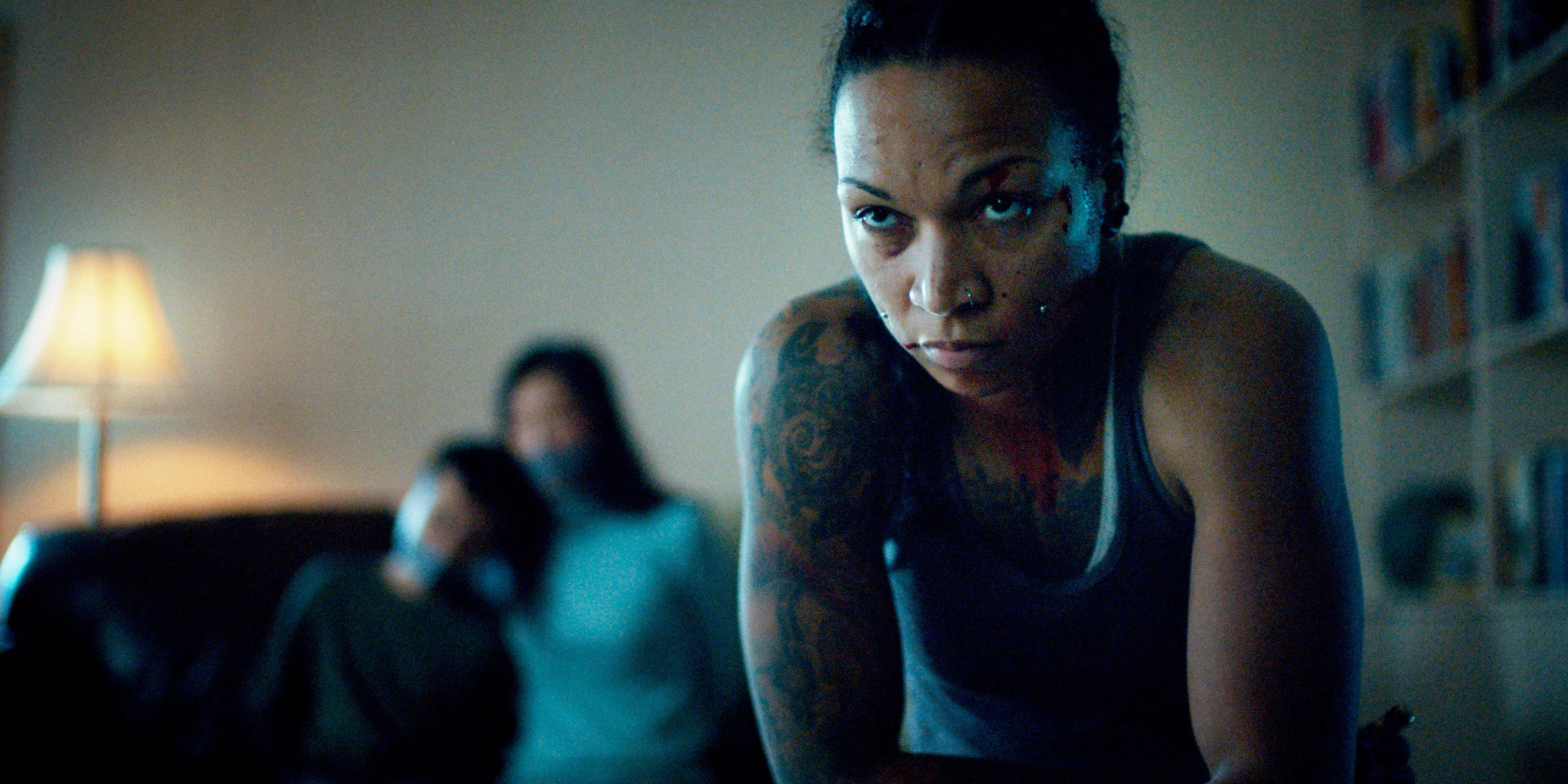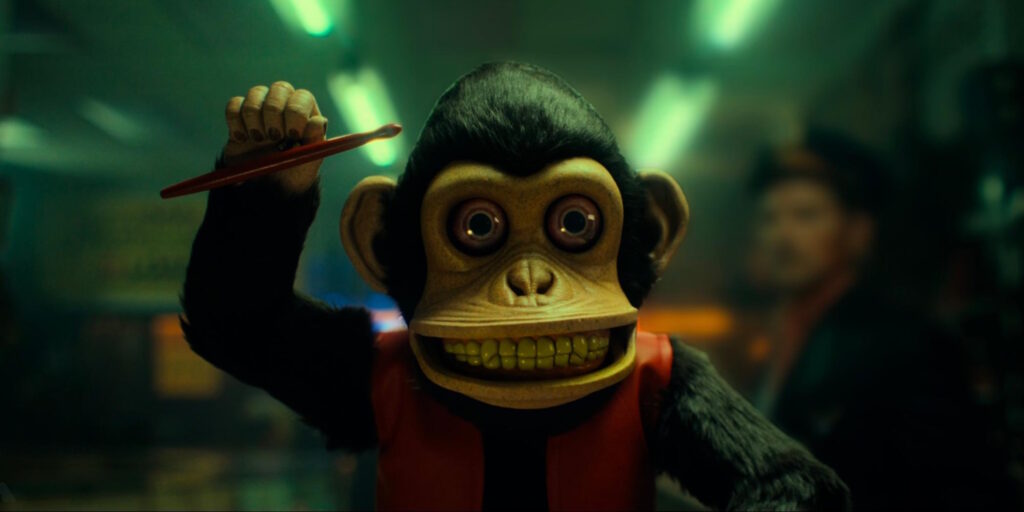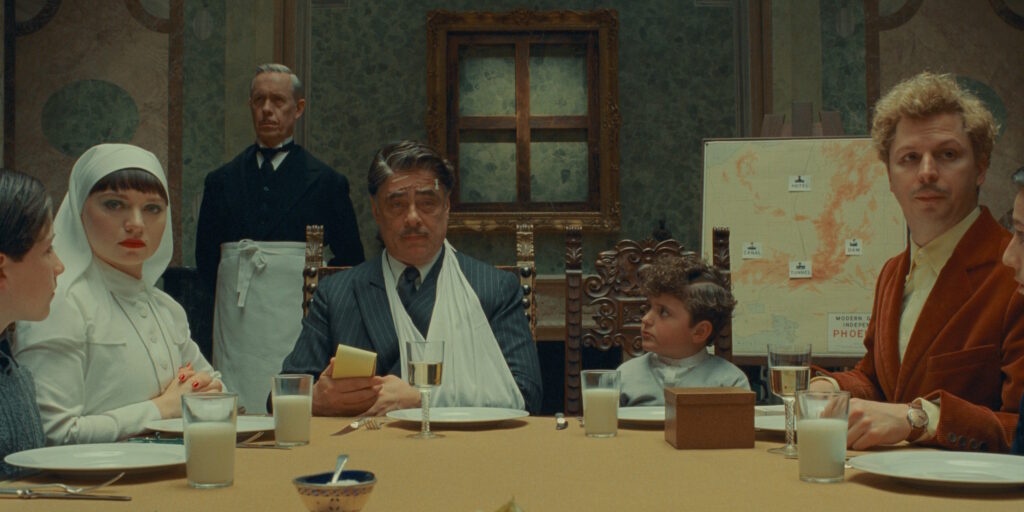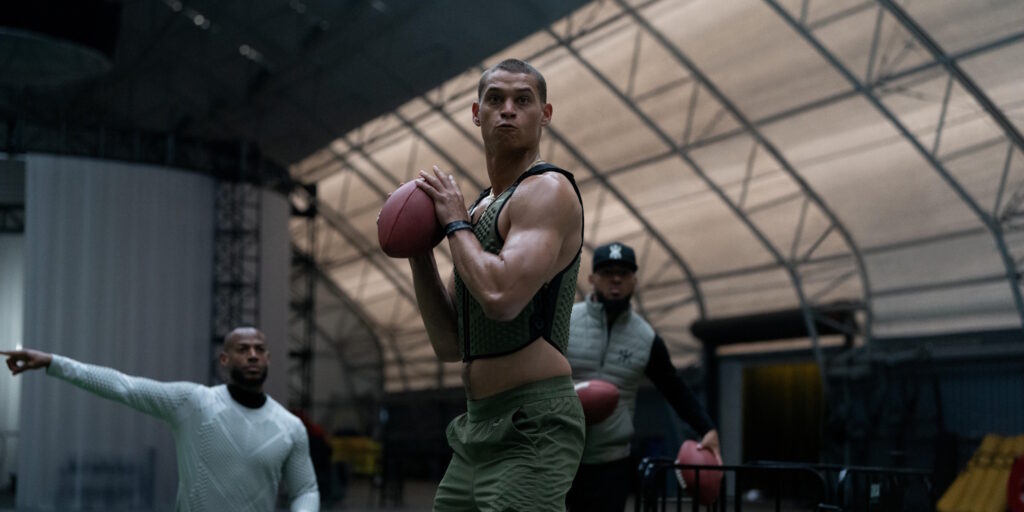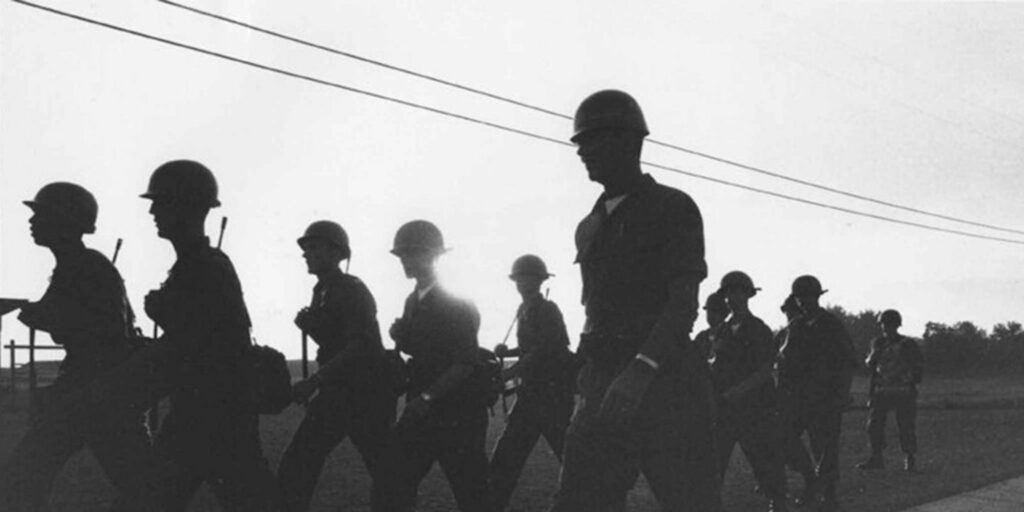[Originally published at Cinema St. Louis’ The Lens.]
You don’t need to know anything about Kali Reis to appreciate her intense, restless performance in the brutal new indie thriller Catch the Fair One. Her character, Kaylee, is a wiry, declining boxer whose skin is scrawled with tattoos and studded with piercings. A good pummeling usually tenderizes meat, but with Kaylee one gets the distinct impression that years of relentless jabs and crosses have only hardened her flesh – and her spirit. Perhaps there’s some self-mortification at work, too. Kaylee’s younger half-sister disappeared some years ago, and all the sweat and blood (and the drugs, in the old days) are a bit like sacraments in a personal ritual of atonement. After all, Kaylee was the last person to see Weeta (Mainaku Borrero) on the night she vanished into a sex trafficker’s SUV. “Just say it,” Kaylee demands bitterly of their mother, Jaya (Kimberly Guerrero), while blinking back tears. “Say you wish it had been me.”
Reis portrays Kaylee as a reticent survivor, a woman prickling with feral-dog wariness even when she’s bussing tables at a greasy spoon and letting her dreams of a comeback fight disappear in the rearview mirror. Right now, she has more unconventional ambitions in mind. Under the watchful eye of her trainer, Brick (Shelly Vincent), she’s sparring with men twice her size and practicing close-quarters escapes and takedowns. It seems that after years of searching, Kaylee’s contacts have at last turned up a solid lead in her sister’s abduction, and she has hatched a plan as perilous as it is unthinkable: intentionally fall into the clutches of the same traffickers, infiltrate their operation, and bring Weeta home.
For Reis, the role is more than a steppingstone to become the next Liam Neeson. Not that she needs a new career path: As a real-life professional boxer with three standing light-welterweight to middleweight world championships as of this writing, Reis has nothing to prove. However, Catch the Fair One is a personal project for the fighter, and she shares a story credit on the film with writer-director Josef Kubota Wladyka. Reis is of Cape Verdean and Native ancestry – she claims descent from the Cherokee, Nipmuc, and Seaconke Wampanog tribes – and she has used her platform to advocate for the Missing and Murdered Indigenous Women and Girls (MMIWG) movement.
Accordingly, Wladyka’s film doesn’t feel like most rescue or revenge thrillers, which are so often designed to titillate the audience with righteous violence. This film is a howl of alarm, grief, and anger, one that emerges from the reality that Native women and girls face every day – a one-two punch of misogyny and racism exacerbated by apathy. Fittingly, Catch the Fair One often upends viewers’ expectations about the style and tone of this thriller subgenre. It doesn’t evince the same level of unruly auteurism as, say, Lynne Ramsay’s masterful You Were Never Really Here (2017), but it’s closer to that film than it is to Taken (2008).
It’s a bit trite to talk about the raw naturalism of a nonprofessional actor’s debut role, but Reis’ performance attains this sort of realism without creating distracting dissonance with her co-stars. She relentlessly draws the viewer’s eye whenever she’s on screen, which is saying something when she’s sharing it with veteran character actors like Kevin Dunn. As Kaylee, Reis moves through the gray-blue winter of upstate New York like a woman who’s been breathing a potent blend of animal fear and steel-ribbed resolve for most of her life. Boxing isn’t devoid of performance, of course, a fact that is acknowledged in flashbacks of Kaylee boldly strutting into the arena for a bout, her sequined robe announcing Reis’ real-life nickname, “K.O.” There’s both subtext and metatext at work in Catch the Fair One, as Kaylee’s undercover scheme requires her to convincingly sublimate her gladiatorial muscle memory for the cringing compliance of a beaten-down victim.
Director Wladyka employs a style that compellingly blends the bloody-knuckle realism of his setting with an almost impressionistic sensibility, especially in the film’s opening 20 minutes. Using handheld shots, shallow focus, and quick cuts, the filmmaker sketches Kaylee’s backstory and present-day reality with striking efficiency. In glimpses of her routine at the gym, the diner, and the women’s shelter where she crashes, the film exhibits an eye for vivid, close-to-the-bone details – as when Kaylee furtively scoops a patron’s leftovers into a takeaway tray and later wolfs them down in her trainer’s car. Wladyka’s screenplay never declares what can emerge more organically through details in the performances or production design. A viewer who goes in cold might not realize that Kaylee is Indigenous, at least until she drops by the community-center support circle her mother runs for the relatives of MMIWG. Other tidbits are more enigmatic, at least for a while – such as the reason Kaylee sleeps with a razor blade in her mouth, prompting her to awaken abruptly every morning with blood pooling on her pillow.
Plenty of narrative features have been made about sex trafficking, from wannabe prestige dramas like The Whistleblower (2010) to direct-to-VOD dreck like Traffik (2018). Most of these films find it difficult to gravely convey the abject horror of their subject while also telling a story that audiences will find at least nominally entertaining. The urgency of Reis’ personal advocacy certainly helps Catch the Fair One to minimize the kind of exploitative ickiness that might otherwise cling to a crime thriller of this stripe. What’s more, centering the story on a Native hero banishes the White-savior staleness and attendant sensation of misery tourism that afflicted Wind River (2017), another feature that ostensibly tackled the subject of MMIWG.
That said, Catch the Fair One’s nimble balance of ice-cold reality and pulse-quickening theater has more to do with presentation than with representation. Wladyka stages the film’s violence in a way that is pointedly un-Hollywood: vicious and clumsy, full of shocking spurts and long, agonizing spasms. Kaylee’s courage and cunning might elicit flickers of admiration from the viewer, but she never feels (or acts) like an indestructible superhero. She fumbles and stumbles, wheezes and heaves, panics and hesitates. Every scene drips with cold-sweat peril, even when she has one of the perpetrators completely in her power. The villains that surround her, after all, are bigger, stronger, numerous, well-armed, and fiercely intent on protecting their heinous criminal enterprise. Kaylee’s plan includes no backup and no fail-safes. Her opponents hold all the advantages, except for two: Her rage is bottomless, and her right hook is a monster.
Catch the Fair One will be available to rent on major online platforms on Friday, Feb. 11.
